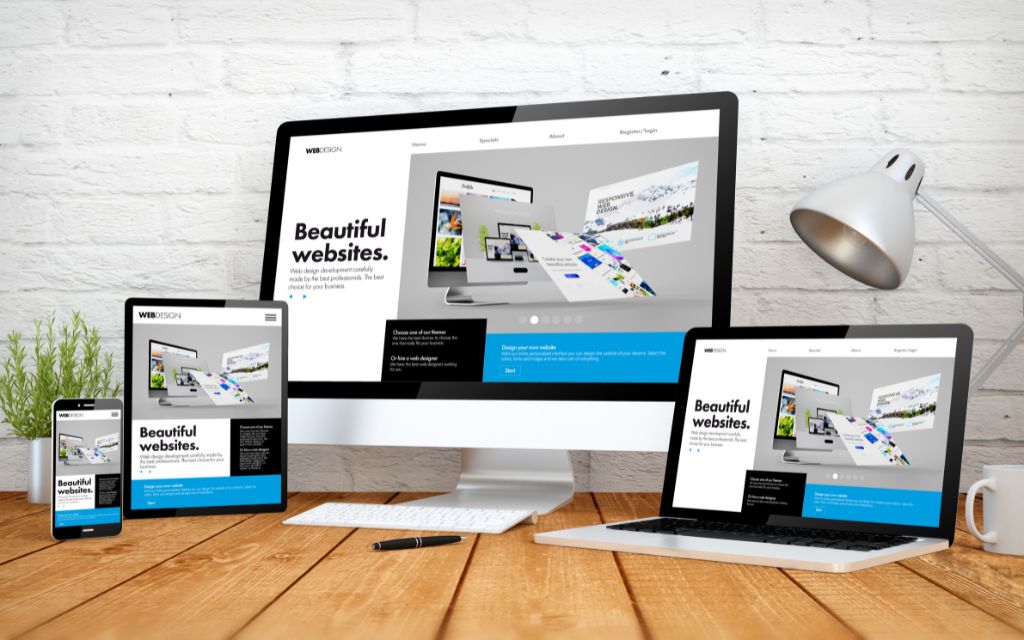You’ve decided to take the plunge and get a website for your business. Or maybe you’re mulling over why your existing website isn’t pulling in those sales as you hoped. The key is to create a great website experience.
In this post, we share the seven elements that can help ensure your website does just that.

1. CONTENT, CONTENT, CONTENT
You’re probably familiar with the real estate mantra ‘location, location, location’. Welcome to the web design version.
Don’t let anybody tell you it’s all about website speed and fancy SEO (Search Engine Optimisation) tricks. Yes, these are important (see below), but ultimately by far the most important factor to a good website is the quality of the content on your site.
Poorly written and/or irrelevant content will result in your visitor spending next to no time on your site and leaving quickly. This will be followed by a visit to another site in order to get what they need. This is a massive red flag for Google. They offered your site as a search result, someone clicked on it and quickly rejected it. If this continues, the Google algorithm will stop presenting your site as a search result.
On the other hand, informative, relevant and well-written content will engage your visitor. An engaged visitor will stay on your site and likely get what they came for. Search complete. This creates the perfect combination of delivering to the customer and to Google. As such, with repeated action, the algorithm will start to rank your site higher
2. VISUAL RESPONSIVE DESIGN
Your website should be visually pleasing. With the use of relevant, bold imagery, well-spaced content and legible clear typology, your first job is to engage your visitor and provide them with a comfortable place to spend time.

3. BRAND AND VISITOR RELEVANCE
The look, language and tone of your website should represent your business brand and that of your visitor/customer. When a visitor lands on your site they should know they’re in the right place. If they are aware of your brand, they should feel comfortable with the familiarity. If they are new to your brand, they should be made comfortable with the choice of language and tone on your site.
For example, consider the images, language and tone used by Shearings and My Party Holiday. Both are selling holidays, but they know they are selling to a very different customer. As such, their sites are very different.
4. CLEAR NAVIGATION
Like with a traditional retail store, visually cluttered websites are hard to navigate and annoying for customers. Rather than using a lot of text, make sure to use plenty of white space and well-placed imagery in order to make everything on your site easy to find.
Website navigation is not just about a clear menu and page structure. It’s also about providing a visitor with a simple journey to get to what they want, whether that’s to contact you, search for the information they need, or just buy a product. Unlike a traditional retail store, it takes less than a second for a visitor to hit that cross button and leave your website.
5. FRESH CONTENT
You should always make sure to stay relevant and interesting by posting fresh content to your website. Adding regular blog posts on a relevant subject to your business and likely customers is a great way to achieve this. Other ways of keeping the content fresh are to update imagery for a new look or add pop-up content to provide information on changes to product ranges, opening hours etc. Don’t assume a visitor will only visit your site once. Catch their attention on each visit. Google’s algorithm also ‘likes’ fresh content.

6. SOCIALLY LINKED
Your website strategy should be fully aligned with your social media strategy. By linking the two, you create a circle of engagement which builds trust with your customers.
Your website should provide clear and obvious links to your social channels. Likewise, your social channel content should drive traffic to your website. Added a new product to your site, or launched a promotion? Post to your socials with links to the site.
7. SEARCH ENGINE OPTIMISATION
As mentioned above, your website should be optimised to provide quality information to Google’s ‘bots’ in order for your website to be seen in organic search results. However, don’t be scared of the phrase or bogged down by the thought of needing to have your website at number one in the rankings.
Of course, there are techniques that your web developer will incorporate into your build, but consider this to be the icing on the cake, not the cake itself.
NEED HELP?
At CLIC, we provide everything you need for a truly great website. Contact us today to discuss your requirements.

